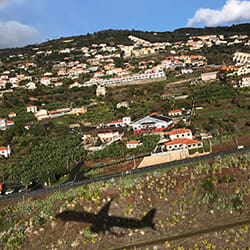Snails are not very familiar as a type of food to Japanese people. When we think of snails as food, we likely think of French escargots de Bourgogne. Covered in escargot butter that is a special sauce for snails containing parsley and garlic, this specialty is presented majestically with a shell picking utensil called escargot tongs made specially for this dish and, on top of that, a fork for picking the snail out from the shell.
Meanwhile, in the neighboring Iberian Peninsula, similar to what we read in the post about Portugal by Ota, last year’s special correspondent, snails that used to be considered elegant French cuisine have suddenly dropped (or risen?) to a down-to-earth popular dish in Spain. It is a very casual food, or like the type of food you would have as a snack with a beer, and you would never imagine seeing it served at a restaurant with cloth tablecloths.*
Snails, the low-fat, high-protein, calcium-, iron-, and vitamin B3-rich super health food is cooked in various different ways throughout Spain for eating. Undeniably, the largest volume of snails is eaten in Andalusia in the South, and it is one of the components of the top four major local dishes that Córdobans love that include rabo de toro (ox tail), flamenquín (cutlet rolls), and salmorejo (thick gazpacho-like soup).
In response to this love for snails, the city authorities of Córdoba give out permits to set up temporary snail stalls for a limited period every year in municipally-managed parks and main roads. The only items permitted for sale are snails and beverages.

Famous shop that twice won second place in a snail stall popularity vote.
In 2018, 46 shops were given business permits. The period is only from February 23 to June 14 that is the roughly four months from the early part starting with the first picking to the prime period and then the end period. The most delicious picking during this period is May, during which Snail Day is held by the Córdoba Snail Sellers’ Association when as much as 1,000 kg of snails are generously given to locals. This year was the eighth year, and it was held on May 13.
Snails you can eat in Córdoba are broadly divided into two types that are each cooked differently.
(1) Small snails used in clear broths are called chicos en caldo. The ones used in this dish are white garden snails, Theba pisana.
A search revealed that they have been registered by the Japanese Ministry of Agriculture, Forestry and Fisheries in a record of disease germ and/or pest detection in an inspection of imported plants. Snails that are considered pests in Japan are a passionately-loved treat in Córdoba.

This large pot of soup started right after the shop opened is hard at work making chicos in consommé soup with a cayenne pepper accent.
(2) Gordos en salsa that is large simmered snails in a sauce made with tomatoes, sweet red peppers, almonds, and other ingredients. The milk snails, Otala lactea, that are used in this dish, are called ‘Spain Saracen Maimai’ in Japanese, which is the perfect name for something related to Andalusia where Islam culture blossomed.

Gordos simmered in sauce.
With (2) as the base, you can get a bunch of varieties, like a super-hot version, a carbonara version, and even rice boiled with snails. Each stall uses their own special techniques to expand their culinary possibilities. After all this, though, about 80% of customers who visit the stalls still order the consommé style of (1). It is the perfect pre-appetizer to have before the appetizer as a light filler before your meal.
When you eat it, the utensil you use is not special snail tongs or a special fork, but just a regular cocktail stick, tea spoon, or regular spoon. You scoop the whole snail still in the shell into your mouth, taste the soup or sauce, then hold the shell in your fingers and use the cocktail stick to pick out the snail and eat it or, if it is small, just suck it out. The empty shells are discarded into a basin or bowl at the stall. Both (1) and (2) come with bread that is dipped into the soup or sauce. This eating style is also very typical of down-to-earth cuisine.

Heaping servings of light and rich snails with a basin for the empty shells.

After a feast. This stall is trying to be a little fancier, offering a stainless steel bowl.
Not only stalls, but fast food restaurants on street corners also sell these two classic dishes. This shop tries to be more eye-catching with Pepsi and Coca Cola signs on the right and left. The plants in the white flowerpots are spearmint used in the consommé dish of (1).

Fast food restaurant storefront.
*One exceptional example of snails appearing on the menu of a high class restaurant is Los Caracoles, a long-established restaurant in downtown Barcelona. It is located near an opera house called El Gran Teatro del Liceu It is said that noble people used to stop by this restaurant for a snail snack when they went to the opera.. This restaurant is now so famous that you cannot find a guide book that does not have it on its pages.
As for the style, it only offers the simmered version in (2).






























































